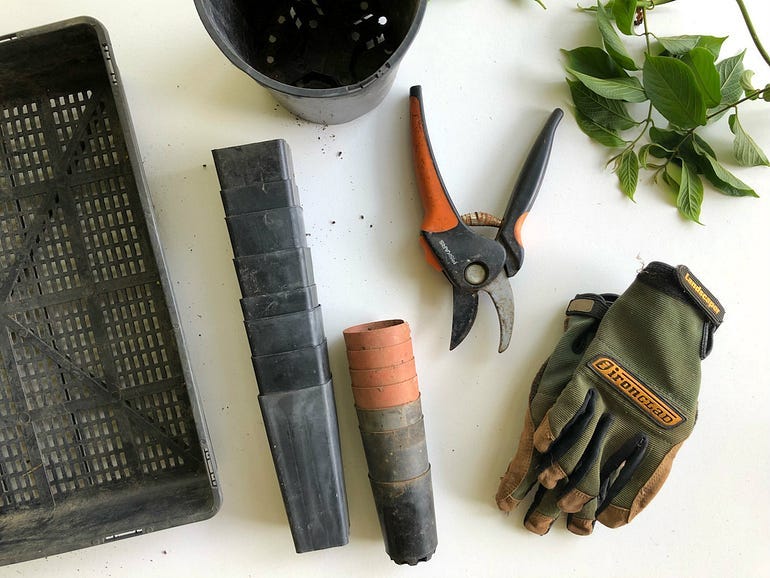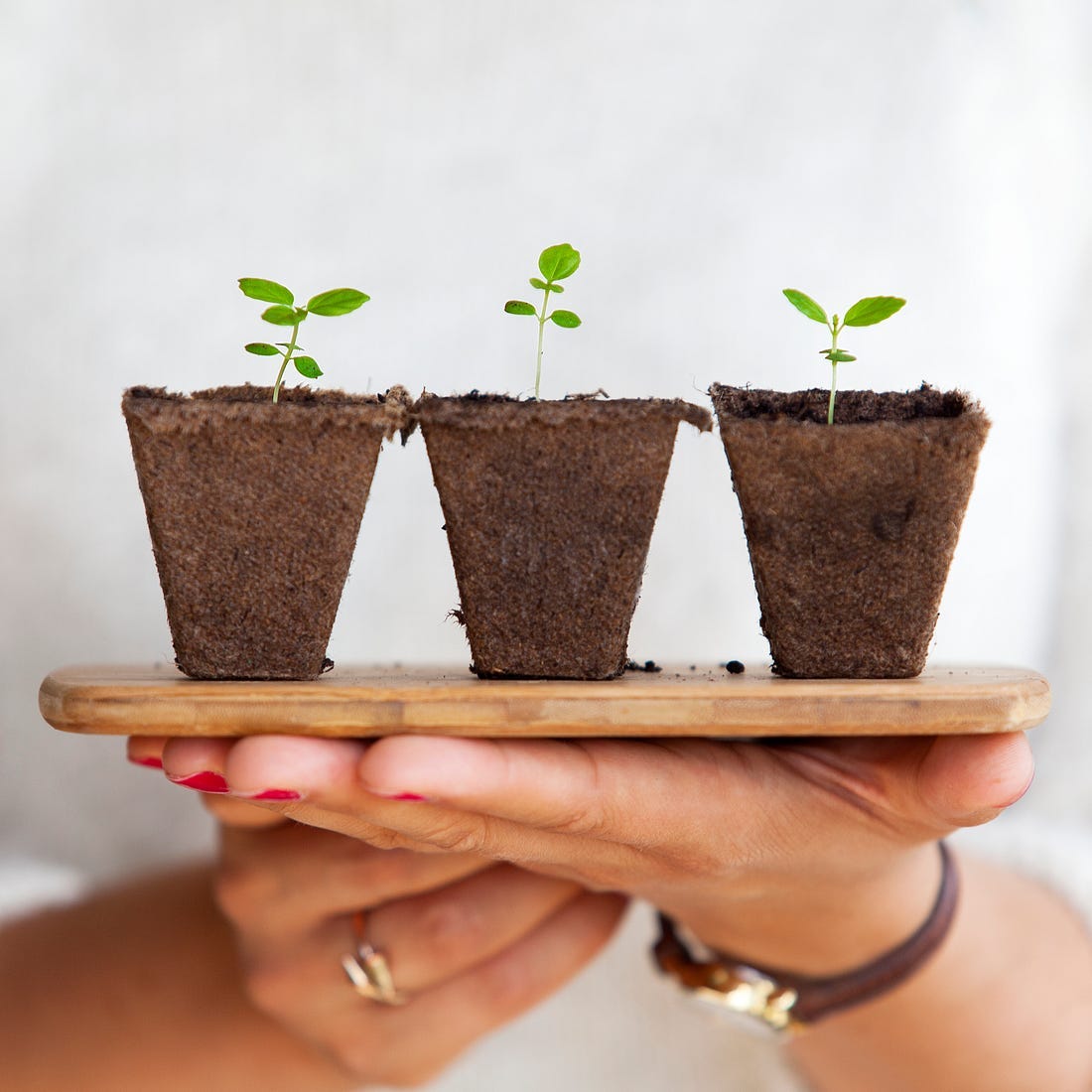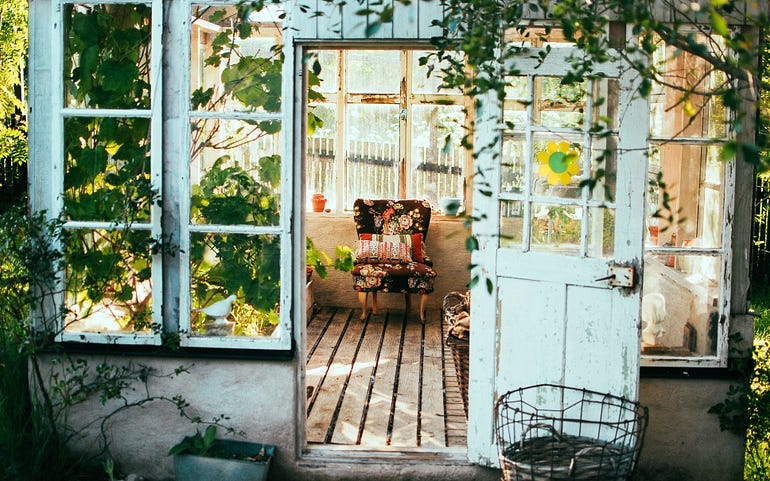Photo by Daniel Öberg on Unsplash
"The garden reconciles human art and wild nature, hard work and deep pleasure, spiritual practice and the material world. It is a magical place because it is not divided."
-Thomas Moore
Art and nature exist in a beautiful partnership in a garden. In his book, Re-Enchantment of Everyday Life, Thomas Moore notes, "The garden reconciles human art and wild nature, hard work and deep pleasure, spiritual practice and the material world. It is a magical place because it is not divided." To work with earth and tools to bring forth a vision really is a spiritual act.
Undeniable parallels exist between the principles of gardening and writing. In every season, the garden itself mirrors the writing process. These lessons have been delivered to me slowly over time. Little glimmers and revelations spring up as I tend the earth in my own little slice of suburbia.
Planning a garden is a creative process that starts with a dream. There’s also something primal and cathartic about it — all the tearing out and trimming down. Then come digging and planting. Eventually, we enjoy the payoff. Surveying the finished product brings satisfaction and a sense of accomplishment.
Surveying the landscape
When I moved to my home in 2007, there was nothing resembling a garden. The house came only with a massive fuschia azalea and a breathtakingly blue hydrangea. That was it.
However, there was potential galore.
Looking at my new yard, I envisioned lush beds like the cottage gardens of England. Though it didn’t exist yet, I had a dream of what could be. Oh, we’d have berries and figs and herbs alongside the flowers—someday. Butterflies and birds would flit to and fro, nourished by the fruits of our labor.
Where there was once almost nothing, we began to cultivate. Over time, we’ve transformed the space and continue to develop it. Some years we do more than others as life and circumstances permit.
Writing is much the same. The seed of a story gives birth to dreams of what could be. We till the soil of our minds with reading and research. Then we labor to sort and organize all the ideas stirring around inside us.
Those tiny ideas take on a robust existence under our faithful care and tending. Little by little, stories come into full bloom after we’ve put in time and effort. It’s the same as adding to a garden plant by plant, year after year.

Dirt is part of the process
In order to truly succeed as a gardener, you can’t be afraid to get dirty. Potting a plant at arm’s-length to avoid getting messy is not really gardening. If you can’t handle mud, weeds, or bugs, don’t become a gardener. Dirt comes with the territory.
Digging in and sweating through the planting and weeding required to transform a landscape is true gardening. After a few hours, we may be smudged and a bit weary. Yet we feel a sense of accomplishment.
There’s similar toil involved in writing. We wrestle and sweat our way through the muddy middle and plot holes. Characters need developing. And like wild weedy vines, we unravel stubborn tangles of thought to make sense of them. Sometimes we even have to dig up sections of our work and toss them out.
It’s a real workout. Writing is not for the faint of heart or those who want to remain clean and unrumpled at the end of the process.

The power of pruning
Several lilac bushes live just outside my dining room window. When I first planted them, I felt discouraged by their slow growth. In time, they grew nicely. So much so that over twelve years, they became a rambling riot of limbs and leaves spilling over into the lawn.
I’d put off pruning, knowing they needed a good chop to help them become the best version of their lilac selves. Finally, armed with a hacksaw, pruning shears, and an iron will, I dove in. It took me the better part of two hours to slice and dice my way through the mess.
After aggressive lilac surgery, I lugged a huge pile of brush out to the curb. When I went back to behold the finished product, I saw transformation. Tidy and trimmed, there stood respectable lilacs ready to come back stronger and lovelier next year.
This is a snapshot of editing, writer friends. Unfortunately, I guarantee it will take more than two hours. It’s unpleasant and messy. We struggle and procrastinate, unsure where to make cuts. However, editing remains the most critical thing to elevate our words from unpolished draft to publishable product. There’s no shortcut for this labor. Similarly, there’s no way around pruning an unruly shrub if you want it to thrive and be its most beautiful.

Digging deep
When preparing the ground for new plants, depth matters. Digging a hole deep enough to accommodate a new plant will help ensure its successful growth. Too shallow or not enough loose soil around the roots, and growth will be stunted. The full potential won’t be realized if writers don’t dig deep.
Writing also requires us to dig deep. It stretches us emotionally to write about personal things. When we can’t seem to propel the story forward, writing forces us to dig down deep into our creative well.
From those depths, we can conjure up something to maneuver past obstacles. A shallow story doesn’t grow good roots. Though exhausting, once we press on with editing and dig to the right depth, everything falls into place.

Some crops may fail
If the conditions aren’t just right, temperamental plants may fail to thrive. Despite starting out as a promising plant, lack of water or unexpected frost may lead to ruin. How disappointing to anticipate the growth of something new only to have it fizzle out. It happens. This is simply the nature of things.
Undoubtedly, we’ve all experienced “failed crops” in our writings. Sometimes stories don’t take shape. We miss deadlines or run out of steam, rendering a piece unsubmitted or unfinished. Whatever potential it had simply slips away.
Failure is of the writer’s journey, just as it is part of the gardener’s journey. When these disappointments come, we must look ahead with hope to new seeds and new stories.
Enjoying the harvest
After grueling effort, a garden offers beauty and bounty. It allows us the hard-won pleasure of sitting back to sip a cold drink and behold what time and hard work have produced. Fragrant roses and sky-high sunflowers speak a testimony.
For writers, holding a finished book or seeing our words published in a magazine offer the same satisfying yield. Doubt and discipline mysteriously converge and come alive as a finished product. It’s a miracle of sorts, just like a garden.
Gardening and writing are inextricably intertwined aspects of my life. In one, I am always inspired for engaging in the other. A cycle of cultivation and harvest calls to me. Reaping and sowing is a reality found both in growing plants and working in my writer’s chair.
Community Garden
Join in the conversation by leaving a comment. Let’s get to know one another better as we continue on the writer’s journey.
Which of the similarities between writing and gardening felt most like your own experiences?
What’s your writing beverage of choice?










I'll kick off the conversation. The power of pruning is what I most identify with. Less really is more. Sometimes I need to slice and dice my work, pruning out sections I may like but don't suit the overall work in progress. It's a common saying in writing that we need to "kill our darlings," which can be difficult. But those trims make a real difference.
My favorite writing beverage is Earl Grey tea with a little honey and milk. :)